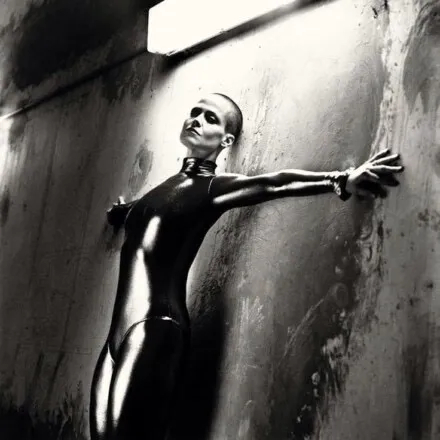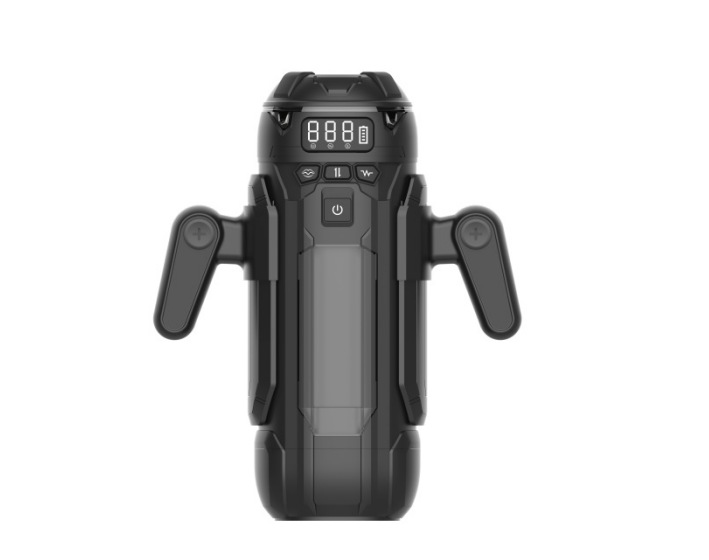The Latex Culture Moment: From Fetish to Fashion
2024-08-28 15:49:53Latex Fashion
A fashion culture rooted in fetishism is thriving.
Latex first appeared in clothing in the early 19th century, quickly sparking a fascination among latex enthusiasts. In the 1800s, the Macintosh Society established, focusing primarily on latex clothing obsession. This was one of the world’s earliest modern fetish organizations.
In recent decades, latex clothing has gradually made its way into mainstream culture. By 2023, it was finally recognized as a high-fashion material and has clearly become a staple in the fashion industry.
This trend has its pros and cons for some. Traditional latex enthusiasts are pleased to see it being embraced and appreciated by the masses. However, they are also frustrated by the appropriation of this material by those outside their niche community—people who flaunt the style without understanding its deeper significance.

Nevertheless, whenever latex clothing makes an appearance in mainstream culture, it’s worth celebrating. After all, for many, these cultural moments are what spark their long-term obsession with latex.
So, how exactly did latex make its way into the mainstream? Let’s start from the beginning.
1. Latex in Photography
Several photographers have contributed to the prominence of latex in photography. Here are a few notable ones:
Robert Mapplethorpe’s BDSM and Fetish Photography, 1978
Robert Mapplethorpe’s photographic art extended beyond the realm of fashion, often exploring BDSM and fetish themes, particularly latex clothing. His work, including depictions of iconic figures within the BDSM community, played a significant role in helping the public understand and accept fetish aesthetics.

Helmut Newton’s Latex Photography, 1992
The renowned fashion photographer Helmut Newton captured a series of influential photos featuring models clad in latex. His work frequently delved into power dynamics and sensory themes, using latex attire to create visually compelling and highly provocative images.

Bob Carlos Clarke’s "Living Dolls" Series
Irish photographer Bob Carlos Clarke became widely recognized after a scandal involving explicit photos with a famous model. One of his most iconic works is a photograph of Rachel Weisz in a black latex catsuit, which became a defining image in his career.

2. Latex in Films
Gorgeous actresses donning tight latex suits in movies have created unforgettable cinematic moments. Here are some classic examples:
Batman Returns, 1992
Michelle Pfeiffer’s portrayal of Catwoman in Batman Returns featured her in a skintight latex catsuit. This artistic expression had a significant impact on popular culture, cementing the association between latex and bold, empowering fashion choices. In short, the Catwoman image helped latex become a symbol of bravery, fashion, and self-empowerment in popular culture.

The Matrix, 1999
In The Matrix, characters sport sleek, form-fitting black pseudo-latex outfits, with Trinity (played by Carrie-Anne Moss) standing out as an iconic figure. The Matrix greatly influenced public perception of latex clothing, linking it with futuristic and cyberpunk aesthetics.

3. Music and Pop Culture
Celebrities wearing latex outfits in music videos or at fashion events inspire their fans to follow suit.
Madonna – “Human Nature,” 1995
In the music video for Madonna's "Human Nature," she wears latex outfits inspired by BDSM culture. The bold visual imagery, combined with lyrics that challenge societal expectations, creates a powerful statement that helped popularize latex as a symbol of rebellious individuality and empowerment. During this era, other pop icons like Britney Spears and Posh Spice from the Spice Girls also took a liking to wearing latex.

Lady Gaga – Various Music Videos, 2008 to Present
Lady Gaga's fashion sense is widely recognized, and latex has been a recurring element in her music videos, including hits like "Bad Romance" and "Poker Face." Gaga’s use of latex has significantly increased its visibility in mainstream pop culture. Notably, her unrestrained style was showcased when she met Queen Elizabeth II while wearing a red latex gown designed by Atsuko Kudo, demonstrating her defiance of conventional norms.

The Kardashian Family
The Kardashian family, along with their circle, including Kanye West and his current partners, contributed to the revival of latex fashion. Various brands, from luxury fashion houses to fast fashion retailers, have eagerly embraced latex. Kim Kardashian’s love for latex clothing dates back to before 2014 and continues to this day.


4. Latex on Fashion Runways
Jean Paul Gaultier’s RTW Spring/Summer Show, 1995
Jean Paul Gaultier’s 1995 Spring/Summer Ready-to-Wear collection was groundbreaking and provocative, featuring extensive use of latex. Dubbed the "Cyberbaba" collection, it showcased futuristic and avant-garde designs that pushed the boundaries of traditional fashion. In this show, Gaultier utilized latex as a key material, incorporating it into various garments such as dresses, skirts, and bodysuits. At the time, using latex in mainstream ready-to-wear fashion shows was pioneering, as latex was previously associated mainly with fetish wear or niche subcultures. By choosing to showcase latex in such a high-profile fashion event, Gaultier helped destigmatize the material and present it as a fashionable choice for a broader audience.

Dior RTW Fall/Winter Show, 2003
John Galliano’s legendary fashion show for Dior, "Shanghai Dream," drew inspiration from 1930s Shanghai and featured materials like silk, brocade, and velvet, reflecting Dior’s signature elegance and refined aesthetic. The inclusion of latex elevated the show, adding a “soft versus hard” contrast and challenging traditional perceptions of the Dior brand. While designers like Jean Paul Gaultier, Vivienne Westwood, and Alexander McQueen were known for using such hardcore materials, this show helped introduce latex into the realm of more traditionally elegant luxury brands.

Atsuko Kudo, 2000s to Present
Atsuko Kudo, who opened her latex clothing store in London in the early 2000s, has been instrumental in making latex a part of high-end and red-carpet fashion. She reimagined latex as an elegant material for creating long evening gowns. In 2012, her brand became the first to host a fashion show entirely composed of latex outfits. Today, when you see celebrities wearing latex, it’s likely the work of Atsuko Kudo. Her fans include numerous celebrities, such as Beyoncé.

From Givenchy to Saint Laurent, 2019 to Present
Latex is no longer in shadows. In the past five years, latex has appeared in designer collections more frequently than ever before. Latex has fully exploded onto the scene, and with it, the associated fetish and kink culture have shed much of their stigma. Christopher Kane’s Fall/Winter 2019 collection focused on specific fetishes, with garments prominently featuring phrases like “Rubberist” printed on them.

Final Thoughts
These cultural and fashion moments with latex not only brought the material from niche to mainstream. But also led to greater recognition and understanding of fetishism. Or at the very least, a departure from traditional thinking. The shining moments of latex culture not only made it a star in the fashion world but also sparked a long-lasting love for it in many. The allure of latex has always been undeniable, and its cultural influence is expanding, making it an indispensable part of the fashion industry.




























